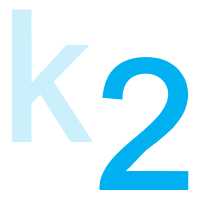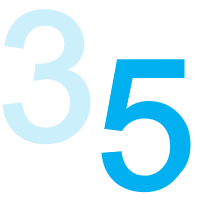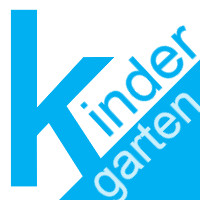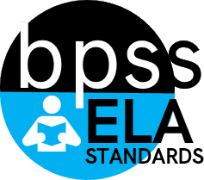K Grade English
 Standards Glossaries
Standards Glossaries
| K Grade English | 1st Grade English | 2nd Grade English |
 Standards Glossaries
Standards Glossaries
| 3rd Grade English | 4th Grade English | 5th Grade English |
 Standards Glossaries
Standards Glossaries
| 6th Grade English | 7th Grade English | 8th Grade English |
 Standards Glossaries
Standards Glossaries
| 9th Grade English | 10th Grade English | 11th Grade English | 12th Grade English |
 Standards Glossaries
Standards Glossaries
| HS Journalism | HS Speech |
| Prioritized Standards |
ELA-00.L.02ELA-00.L.02 Demonstrate command of the conventions of standard English capitalization, punctuation, and spelling when writing.Sub-Standards:
Introduce:
a. Recognize and name end punctuation.
b. Use end punctuation for sentences. c. Use conventional spelling for words with common spelling patterns and for frequently occurring irregular words. d. Spell untaught words phonetically, drawing on phonemic awareness and spelling conventions
e. Use conventional spelling for high-frequency and other studied words.
f. Spell grade-appropriate words correctly, consulting references as needed and/or using spelling patterns and generalizations (e.g., word families, position-based spelling, syllable patterns, ending rules, meaningful word parts).
Display proficiency in:
g. Capitalize the first word in a sentence and the pronoun I.
h. Write a letter or letters for most consonant and short-vowel sounds (phonemes). i. Spell simple words phonetically, drawing on knowledge of sound-letter relationships. | |
ELA-00.RFNarrative for Reading Foundations Strand:The Foundational Skill standards are directed toward fostering students' understanding and working knowledge of: Concepts of Print: Recognizing the features print (ex. how to hold a book, knowing where to start reading....) Phonological Awareness: Understanding how spoken words work (rhyming, hearing the individual sounds in words such as the first sound in the word cat is /c/). Phonics and Word Study: The relationship between letters and sounds in language. Students will learn to recognize high-frequency words (ex. I, and, go, is, the) automatically. Fluency: The ability to read smoothly and expressively, and in kindergarten students will participate in shared reading experiences and hear teachers reading aloud. This helps kindergarteners understand that we read with purpose and understanding. How to help your child at home with the foundational skill strand:
Resources
Calculation Method for StrandsStrands are larger groups of related standards. The Strand Grade is a calculation of all the related standards. Click on the standard name below each strand to access the learning targets and proficiency scales for each strand's related standards. | |
ELA-00.RF.01ELA-00.RF.01 Demonstrate understanding of the organization and basic features of print.Sub-Standards:
a. Follow words from left to right, top to bottom, and page by page.
b. Recognize spoken words are represented in written language by specific sequences of letters.
c. Understand words are separated by spaces in print.
d. Recognize and name all uppercase and lowercase letters of the alphabet. Student Learning Targets:Knowledge Targets
Reasoning Targets
Skills (Performance) Targets
Proficiency ScaleThe student can ...1 Beginning... with help, demonstrates a partial understanding of some of the simpler details and processes (Score 2.0 content) and some of the more complex ideas and processes (Score 3.0 content).Novice 2 Developing... demonstrates no major errors or omissions regarding the simpler details and processes but exhibits major errors or omissions regarding the more complex ideas and processes (Score 3.0 content).
3 Proficient“The Standard.”... demonstrates no major errors or omissions regarding any of the information and processes that were end of instruction expectations.
4 Advanced... demonstrates in-depth inferences and applications regarding more complex material that go beyond end of instruction expectations.Complex Resources | |
ELA-00.RF.01.p1 | |
ELA-00.RF.01.p2
ELA-00.RF.01 Demonstrate understanding of the organization and basic features of print.
ELA-00.RF.01.p2 Part 2
| |
ELA-00.RF.02
ELA-00.RF.02 Demonstrate understanding of spoken words, syllables, and sounds (phonemes)Sub-Standards:
a. Recognize and produce rhyming words.
b. Count, pronounce, blend, and segment syllables in spoken words. c. Blend and segment onsets and rimes of single-syllable spoken words.
d. Isolate and pronounce the initial, medial vowel, and final sounds (phonemes) in three phoneme (consonant-vowel-consonant, or CVC) words. (This does not include CVCs ending with /l/, /r/, or /x/).
e. Add or substitute individual sounds (phonemes) in simple, single-syllable words to make new words. Student Learning Targets:Knowledge Targets
Reasoning Targets
Skills (Performance) Targets
Proficiency ScaleThe student can ...1 Beginning... with help, demonstrates a partial understanding of some of the simpler details and processes (Score 2.0 content) and some of the more complex ideas and processes (Score 3.0 content).Novice 2 Developing... demonstrates no major errors or omissions regarding the simpler details and processes but exhibits major errors or omissions regarding the more complex ideas and processes (Score 3.0 content).
3 Proficient“The Standard.”... demonstrates no major errors or omissions regarding any of the information and processes that were end of instruction expectations.
4 Advanced... demonstrates in-depth inferences and applications regarding more complex material that go beyond end of instruction expectations.Complex ResourcesVocabulary
Websites
| |||
ELA-00.RF.02.p1 | |
ELA-00.RF.02.p2 | |
ELA-00.RF.02.p3
ELA-00.RF.02 Demonstrate understanding of spoken words, syllables, and sounds (phonemes)
ELA-00.RF.02.p3 Part 3
| |
ELA-00.RF.03
ELA-00.RF.03 Know and apply grade-level phonics and word analysis skills in decoding words.Sub-Standards:
a. Demonstrate basic knowledge of one-to-one letter-sound correspondences by producing the primary or many of the most frequent sounds for each consonant.
b. Associate the long and short sounds with common spellings (graphemes) for the five vowel sounds.
c. Decode and use CVC words.
d. Read common high-frequency words by sight. e. Distinguish between similarly spelled words by identifying the sounds of the letters that differ. Student Learning Targets:Knowledge Targets
Reasoning Targets
Skills (Performance) Targets
Proficiency ScaleThe student can ...1 Beginning... with help, demonstrates a partial understanding of some of the simpler details and processes (Score 2.0 content) and some of the more complex ideas and processes (Score 3.0 content).
2 Developing... demonstrates no major errors or omissions regarding the simpler details and processes but exhibits major errors or omissions regarding the more complex ideas and processes (Score 3.0 content).
3 Proficient“The Standard.”... demonstrates no major errors or omissions regarding any of the information and processes that were end of instruction expectations.
4 Advanced... demonstrates in-depth inferences and applications regarding more complex material that go beyond end of instruction expectations.
ResourcesVocabulary
Websites
| |||
ELA-00.RF.03.p1
ELA-00.RF.03 Know and apply grade-level phonics and word analysis skills in decoding words.
ELA-00.RF.03.p1 Part 1
| |
ELA-00.RF.03.p2
ELA-00.RF.03 Know and apply grade-level phonics and word analysis skills in decoding words.
ELA-00.RF.03.p2 Part 2
| |
ELA-00.RF.03.p3 | |
ELA-00.RINarrative for Informational Reading Strand:The primary purpose of informational text (non-fiction) is to inform the reader about the natural or social world. Different from literaure (fiction), informational text does not utilize characters. In this strand students are expected to determine the topic (who or what the text is about). Students will also ask and answer questions about the topic of the text and retell what they read. Informational text offers a variety of structures to assist the readers in finding information quickly and efficiently. These might include a table of contents, bold or italicized text, gloassaries, embedded definitions for specialized vocabulary, realistic illustrations of photos, captions and other labels, and graphs and charts. Continued work on reading comprehension standards will heighten student abilities to read more age appriopriate informational (non-fiction) text. Teachers use assessment and observation to determine if students are ready to progress to more challenging reading selections. Each child is unique, so be flexible, and trust your judgment as you assist your child. Together teachers and parents can help students make better choices when selecting books to read. Our youngest readers benefit from rereading text and text with high repetition. Although levels of reading determined through observation and assessment are valuable, caution is important in not confining children to a text level. Young readers can progress through levels of text quickly, but not all children progress at the same pace, which is expected. Increasing the frequency of reading is the highest predictor of success at any grade level. Building a child’s confidence, through successful experiences with reading, will encourage that desire to read more. Developing successful, life-long readers is our ultimate goal.
How to Help Your Child At Home with the Informational Text Strand:
ResourcesCalculation Method for StrandsStrands are larger groups of related standards. The Strand Grade is a calculation of all the related standards. Click on the standard name below each strand to access the learning targets and proficiency scales for each strand's related standards. | |
ELA-00.RI.01 | |
ELA-00.RLNarrative for Literature Strand:Reading literature (fiction) allows students to learn about other lives and times that relate to their own personal experiences. In this strand, students will ask and answer questions about key details (characters, setting, plot), along with retelling what they have read. Literature (fiction) helps readers learn important life lessons through the lives of the characters, comparing their own experiences with the experiences of the characters they read about. Reading literature (fiction) allows us to learn to appreciate the beauty of the language, and to be articulate speakers and writers. Continued work on reading comprehension standards will heighten student abilities to read more complex literature (fiction) text. Teachers use assessment and observation to determine if students are ready to progress to more challenging reading selections. Each child is unique, so be flexible, and trust your judgment as you assist your child. Together teachers and parents can help students make better choices when selecting books to read. Our youngest readers benefit from rereading text and text with high repetition. Although levels of reading determined through observation and assessment are valuable, caution is important in not confining children to a text level. Young readers can progress through levels of text quickly, but not all children progress at the same pace, which is expected. Increasing the frequency of reading is the highest predictor of success at any grade level. Building a child’s confidence, through successful experiences with reading, will encourage that desire to read more. Developing successful, life-long readers is our ultimate goal. Continued work on reading comprehension standards will heighten student abilities to read age appropriate literature (fiction) text. Teachers use assessment and observation to determine if students are ready to progress to more challenging reading selections. Each child is unique, so be flexible, and trust your judgment as you assist your child. Together teachers and parents can help students make better choices when selecting books to read. Our youngest readers benefit from rereading text and text with high repetition. Although levels of reading determined through observation and assessment are valuable, caution is important in not confining children to a text level. Young readers can progress through levels of text quickly, but not all children progress at the same pace, which is expected. Increasing the frequency of reading is the highest predictor of success at any grade level. Building a child’s confidence, through successful experiences with reading, will encourage that desire to read more. Developing successful, life-long readers is our ultimate goal.
How to Help Your Child At Home with the Literature Strand:
Resources:
Calculation Method for StrandsStrands are larger groups of related standards. The Strand Grade is a calculation of all the related standards. Click on the standard name below each strand to access the learning targets and proficiency scales for each strand's related standards. | |
ELA-00.RL.01 | |
ELA-00.SLNarrative for the Speaking and Listening Strand:Speaking and listening standards require students to develop a range of oral communication and interpersonal skills that facilitate various types of discussion and oral exchange. Students must learn to work together, express and listen carefully to ideas,
and integrate information from various sources, (e.g., oral, visual, quantitative, and media). Students must also gain skills in evaluating what they hear, use various sources to support what they are communicating, and adapt their speech to the content
and the task at hand.
Speaking and listening skills are necessary prerequisites for reading and writing. Oral language development precedes and is the foundation for writing. A student’s listening and speaking vocabulary sets boundaries on what that student can read and understand no matter how well they decode. In addition, new technologies have expanded the role speaking and listening play in acquiring and sharing ideas, tightening their link with other forms of communication. Students in kindergarten participate in discussions with peers and adults about grade level topics and texts they have heard read aloud or presented orally or through other media. They learn and practice rules of discussion such as taking turns and listening to others. They ask and answer questions about key details in texts and other information presented orally. They also use questioning to acquire additional information and to clarify something that is not understood. How to help your child with the Speaking and Listening Standards:
Resources
Calculation Method for StrandsStrands are larger groups of related standards. The Strand Grade is a calculation of all the related standards. Click on the standard name below each strand to access the learning targets and proficiency scales for each strand's related standards. | |
ELA-00.SL.01
ELA-00.SL.01 Participate in collaborative conversations with diverse partners about kindergarten topics and texts with peers and adults in small and larger groups.
a. Follow agreed upon rules for discussions (e.g., listening to others and taking turns speaking about the topics and texts under discussion).
b. Continue a conversation through multiple exchanges. | |
ELA-00.WNarrative for the Writing Strand:The standards in this strand include three kinds of writing: opinion, informative, and narrative. Opinion and informative writing will likely start with kids reading one or more books and responding to what they’ve learned. In an opinion piece, your child introduces the book or topic he’s writing about, states his opinion or preference about it, gives a reason or two to support his opinion (e.g. Goldilocks was wrong to go into the home of the 3 bears.) The kindergarten writer is also learning to use conclusions. In an informative piece, your child names what he’s writing about and gives some information, facts, or details about it (e.g. Dogs bark and come in many sizes). Writing a narrative is like writing a story, and your child’s story may be inspired by books, experiences, or pure imagination. Your child's story should describe an events with some details about the event (e.g. I went to the circus and I saw a clown) and give some sense of the story coming to an end (It was fun). In kindergarten written language skills are emerging. Students will be using thier inventive spelling as they emerge as writers (bunny may first be spelled with the beginning sound "b" or spelled "bne"). Written language skills are addressed in the Language standards strand.
How can I help my child at home with the writing strand standards?
ResourcesCalculation Method for StrandsStrands are larger groups of related standards. The Strand Grade is a calculation of all the related standards. Click on the standard name below each strand to access the learning targets and proficiency scales for each strand's related standards. | |
ELA-00.W.01ELA-00.W.01 Write opinion pieces using a combination of drawing and writing.Sub-Standards:
a. Tell a reader the topic or the name of the book they are writing about
b. State an opinion or preference about the topic or book (e.g., My favorite book is…)
| |
ELA-00.W.02ELA-00.W.02 Write informative/explanatory texts using a combination of drawing and writing.Sub-Standards:
a. Name what they are writing about.
b. Supply some information about the topic.
| |
ELA-00.W.03ELA-00.W.03 Write narratives using a combination of drawing and writing.Sub-Standards:
a. Narrate a single event or several loosely linked events.
b. Tell about the events in the order in which they occurred.
c. Provide a reaction to what happened.
| |



 Kindergarten
Kindergarten